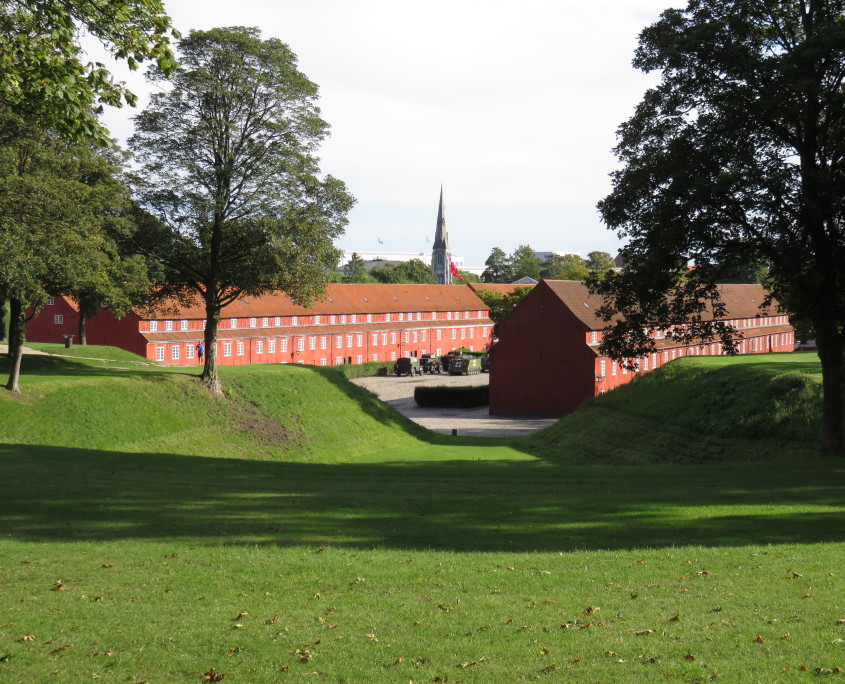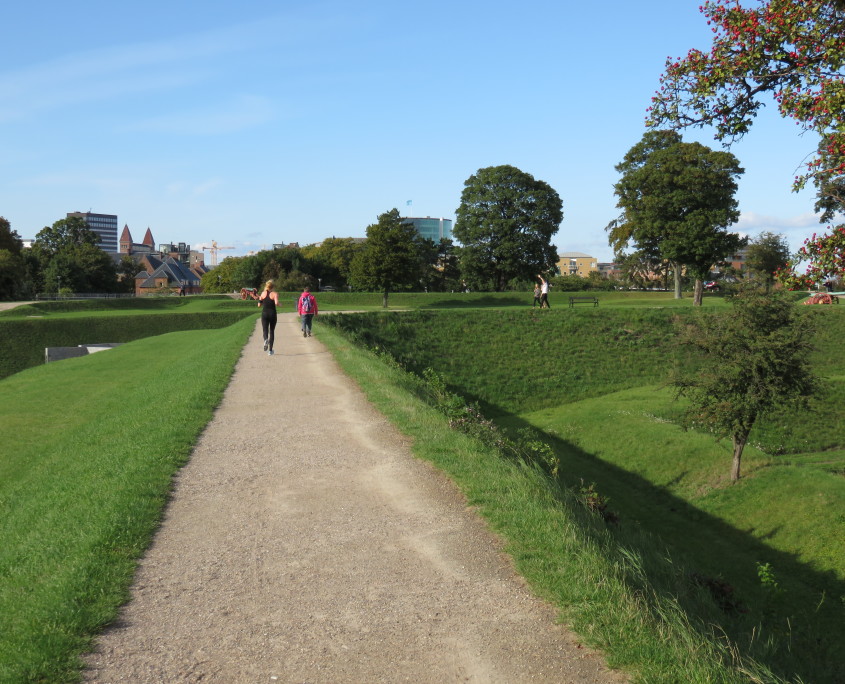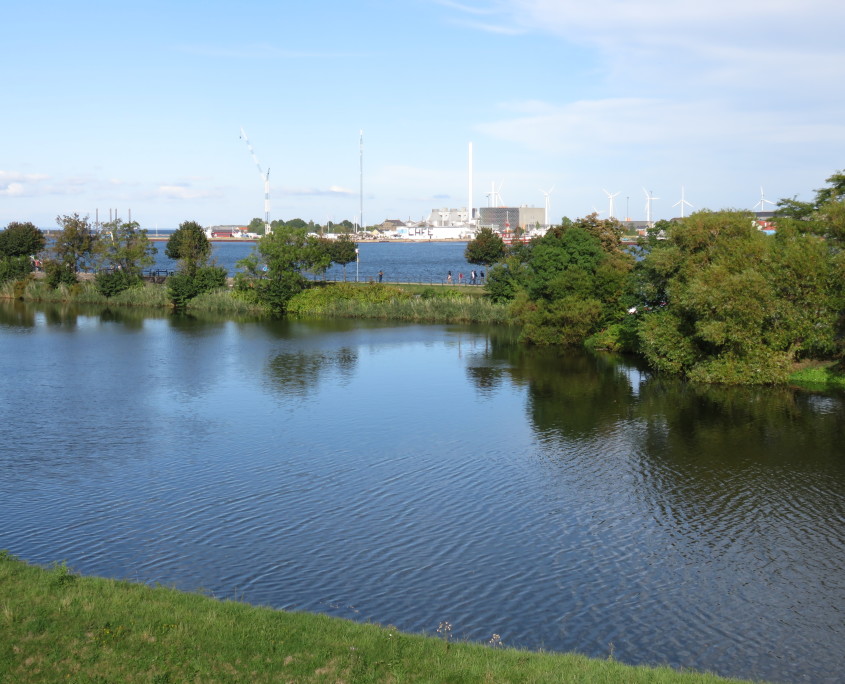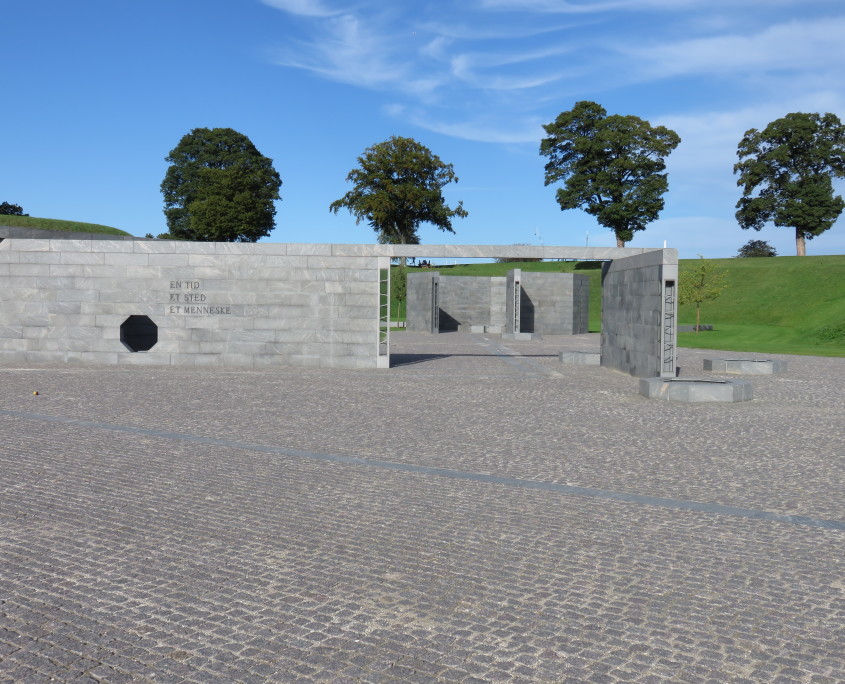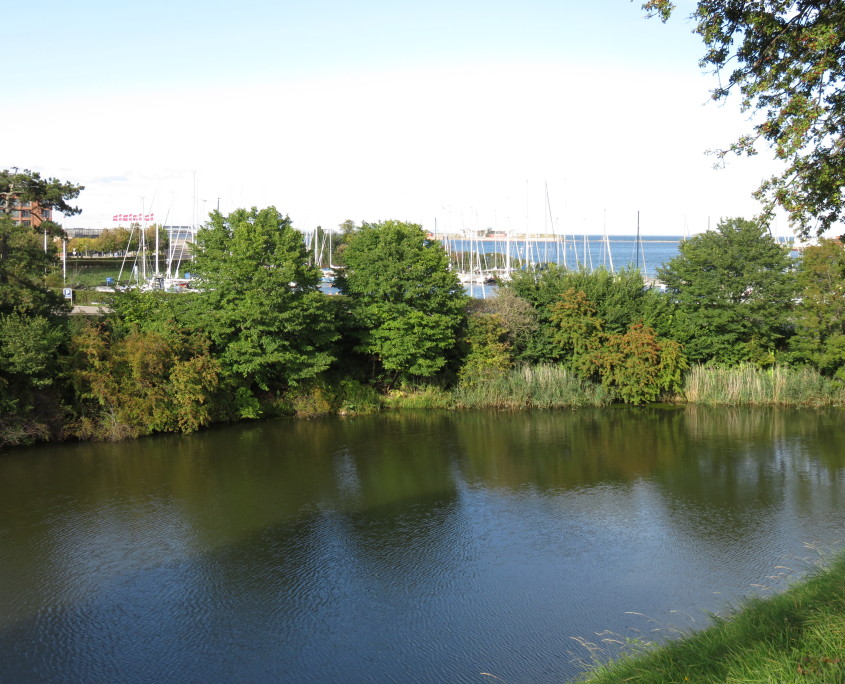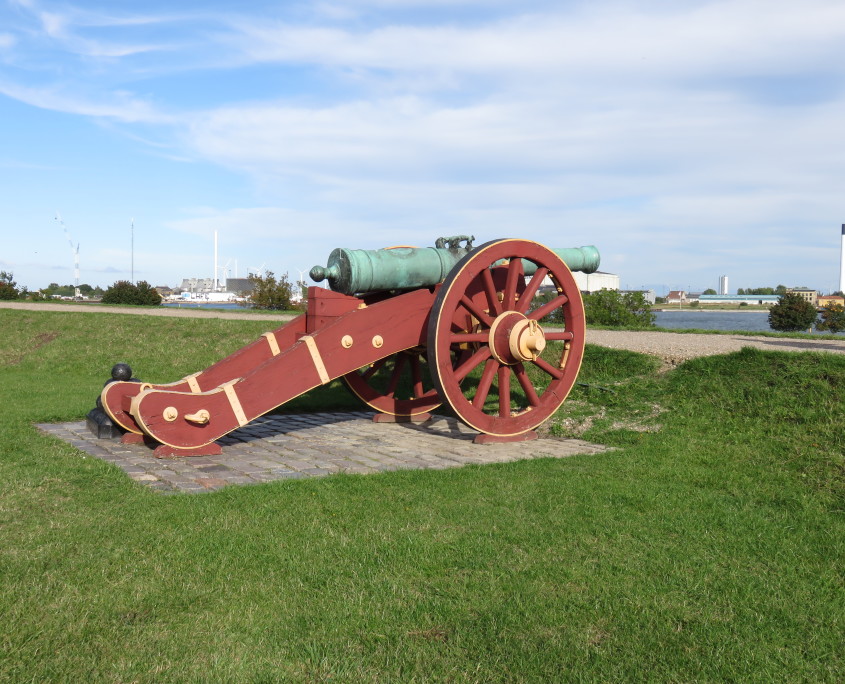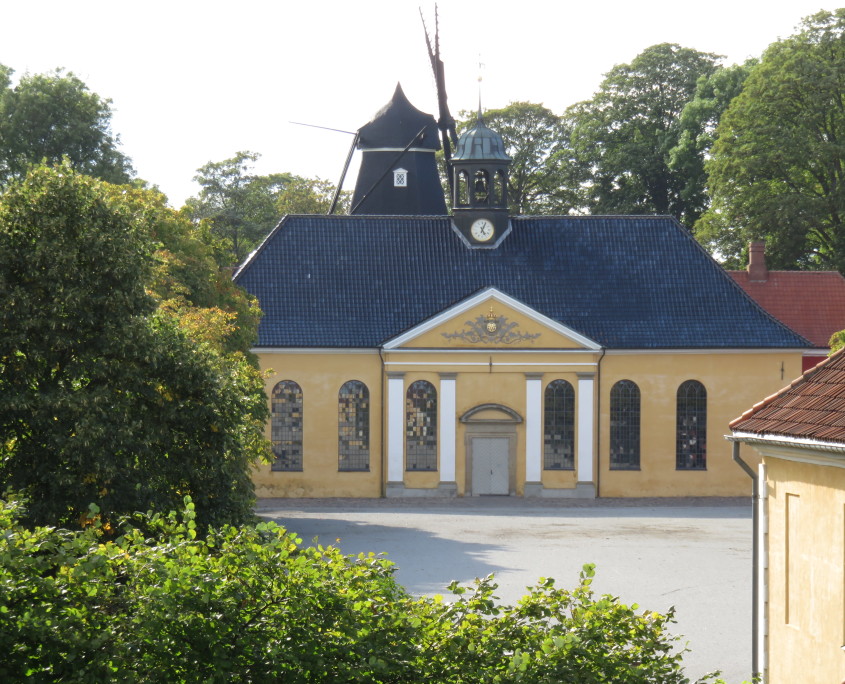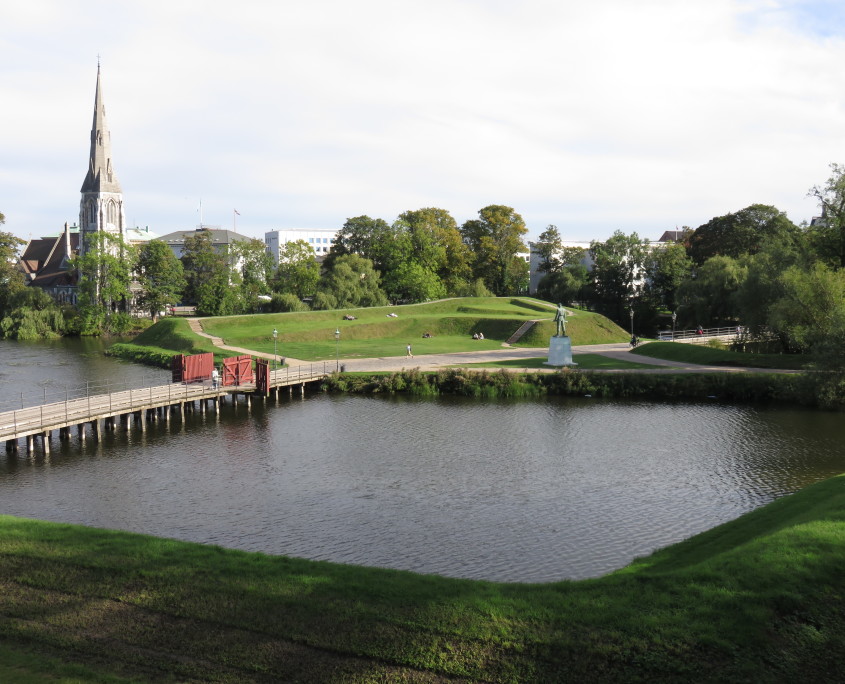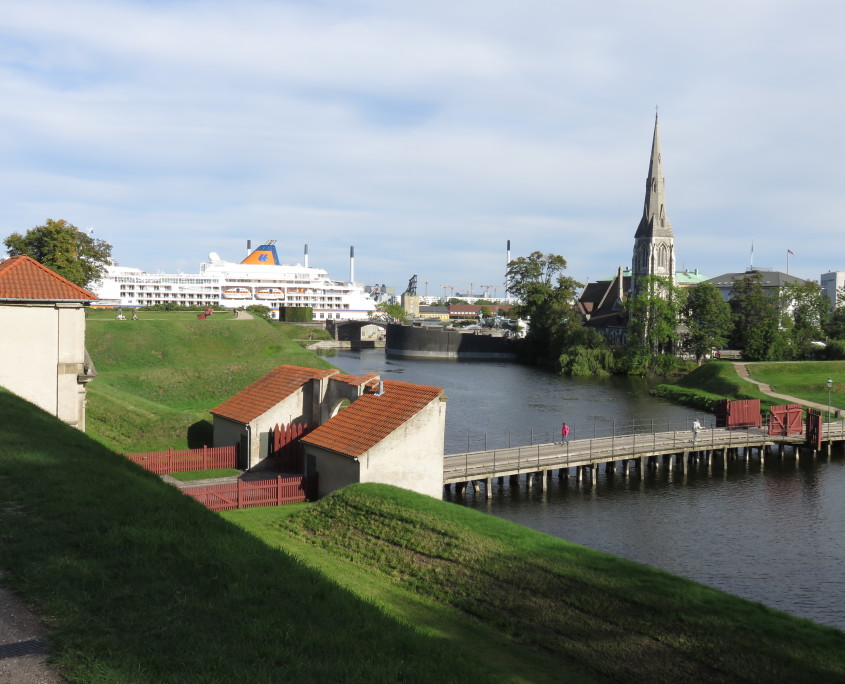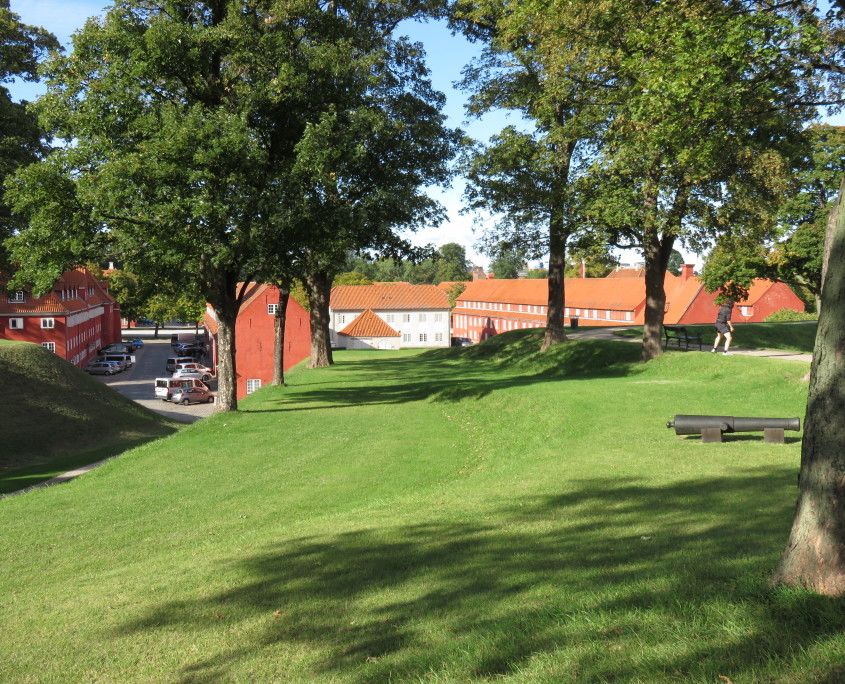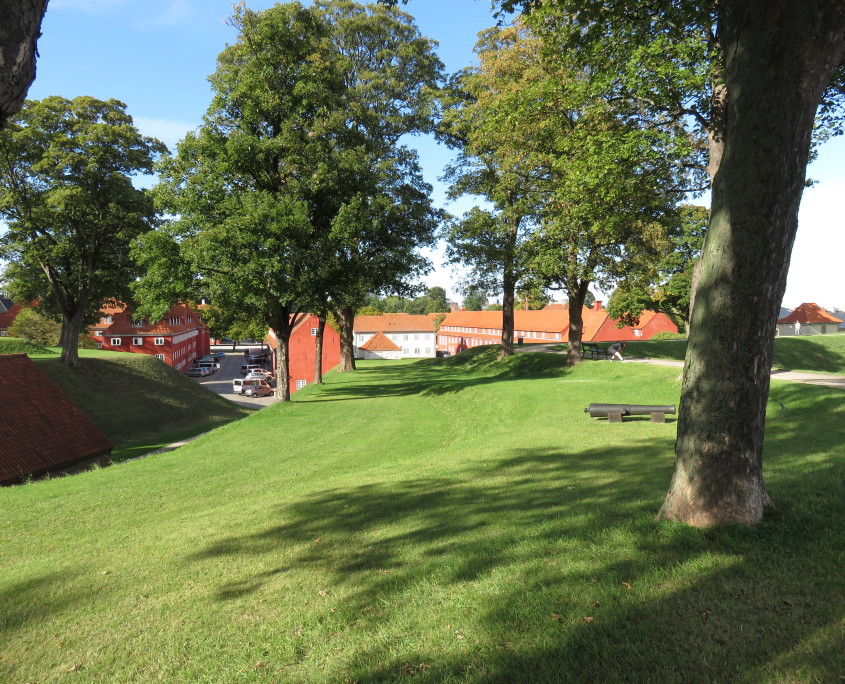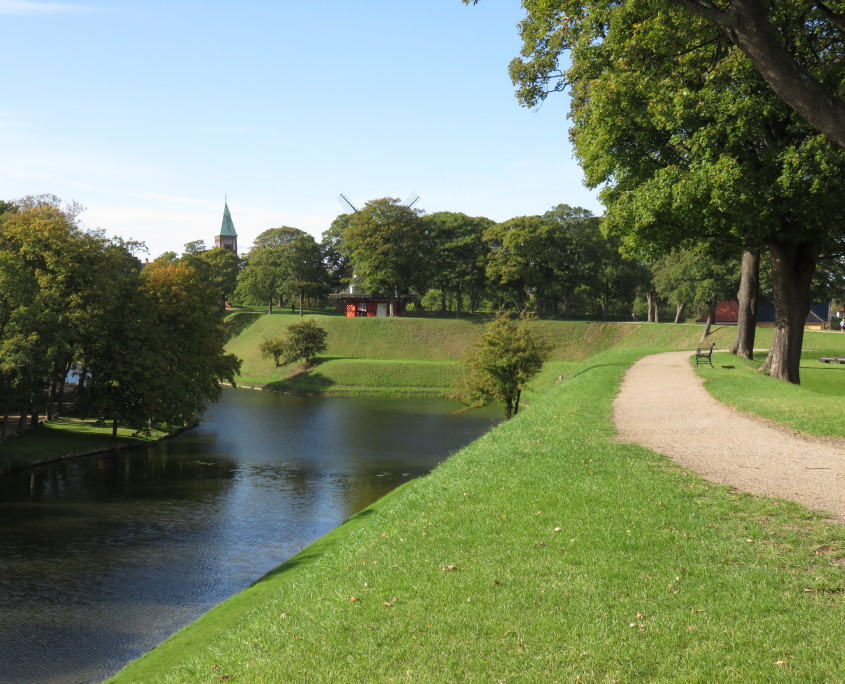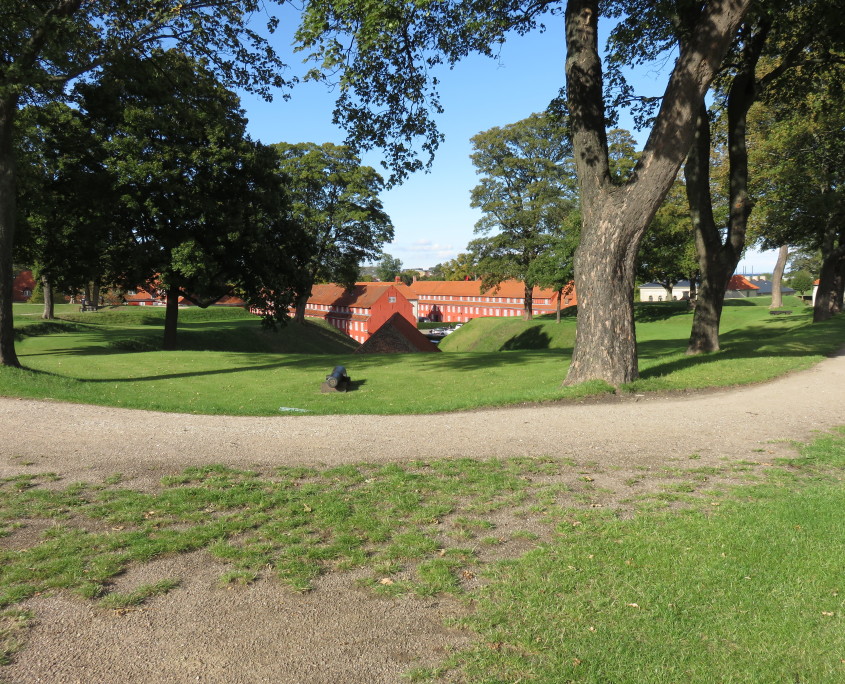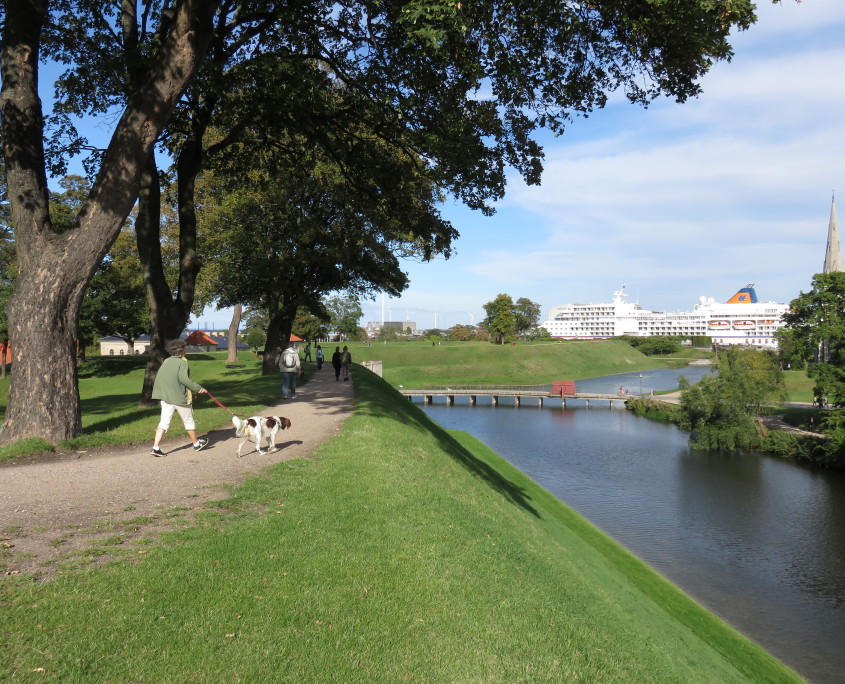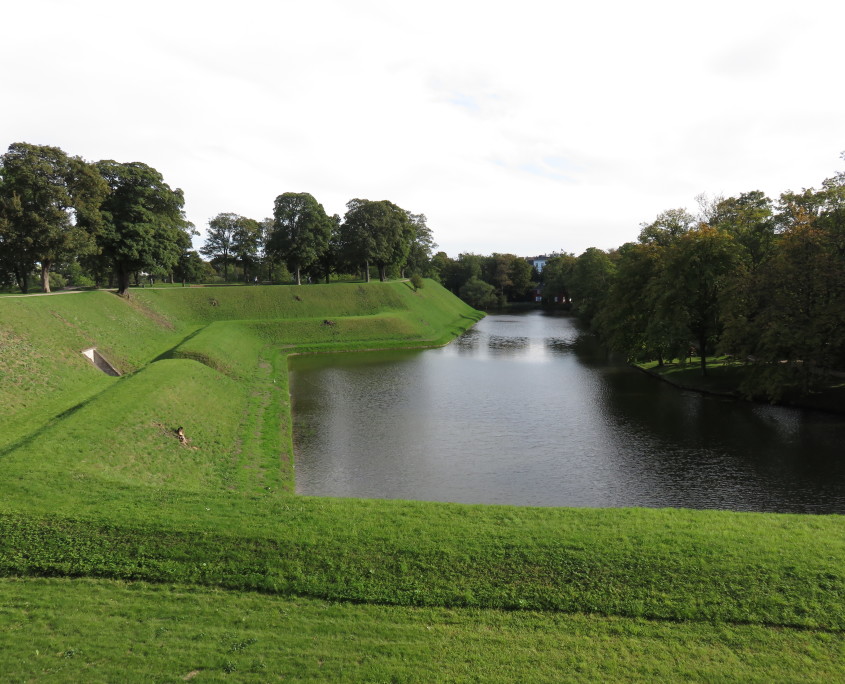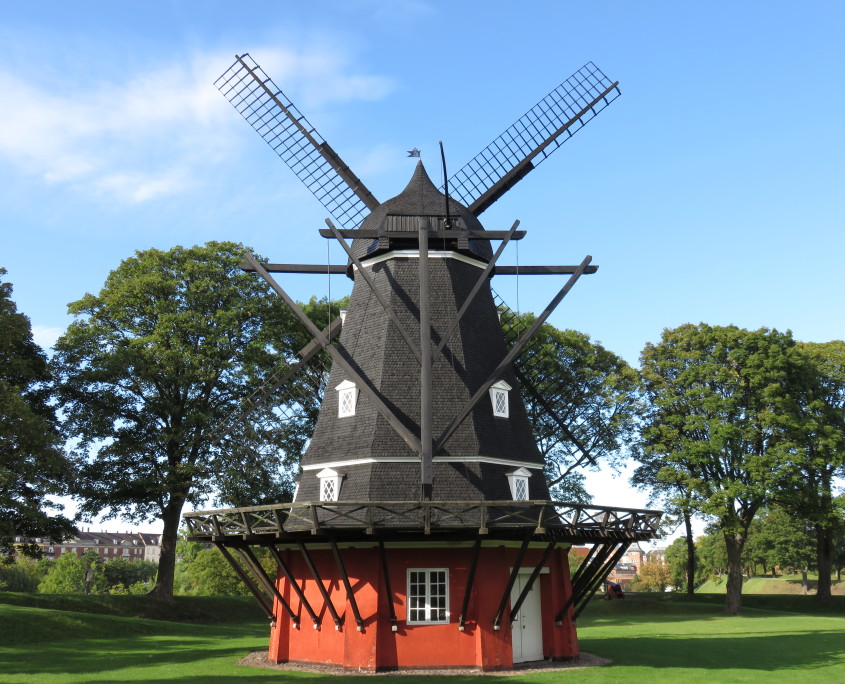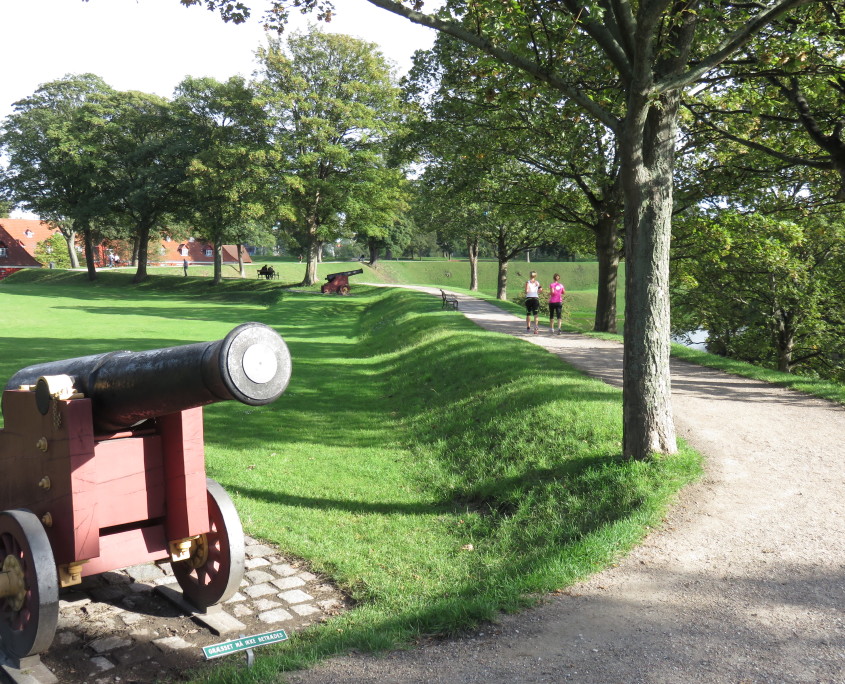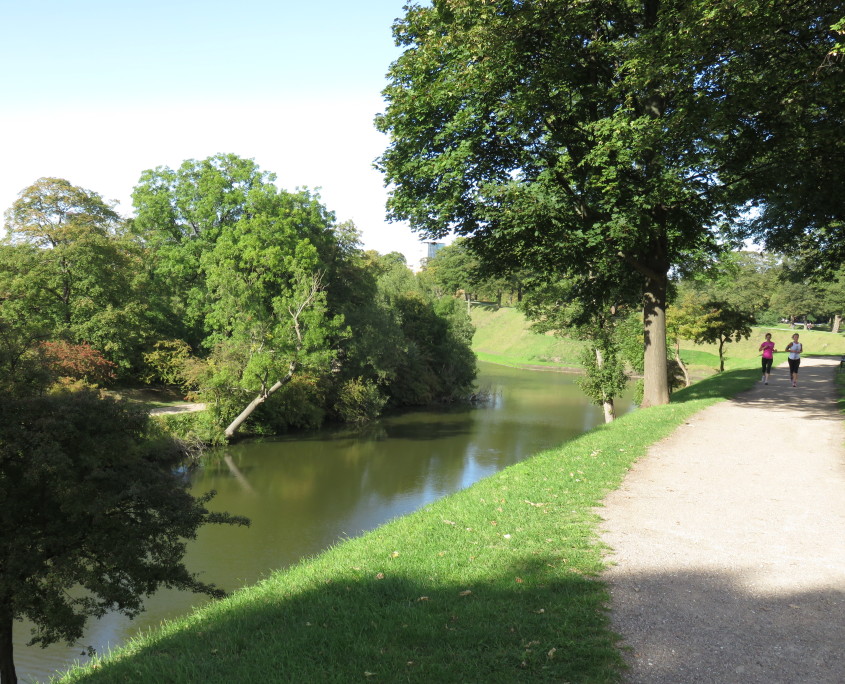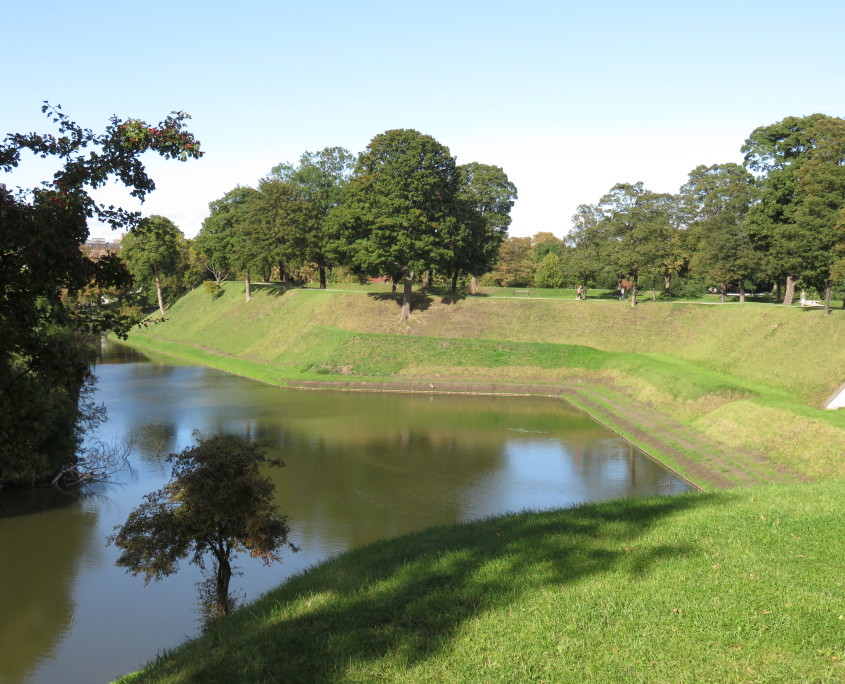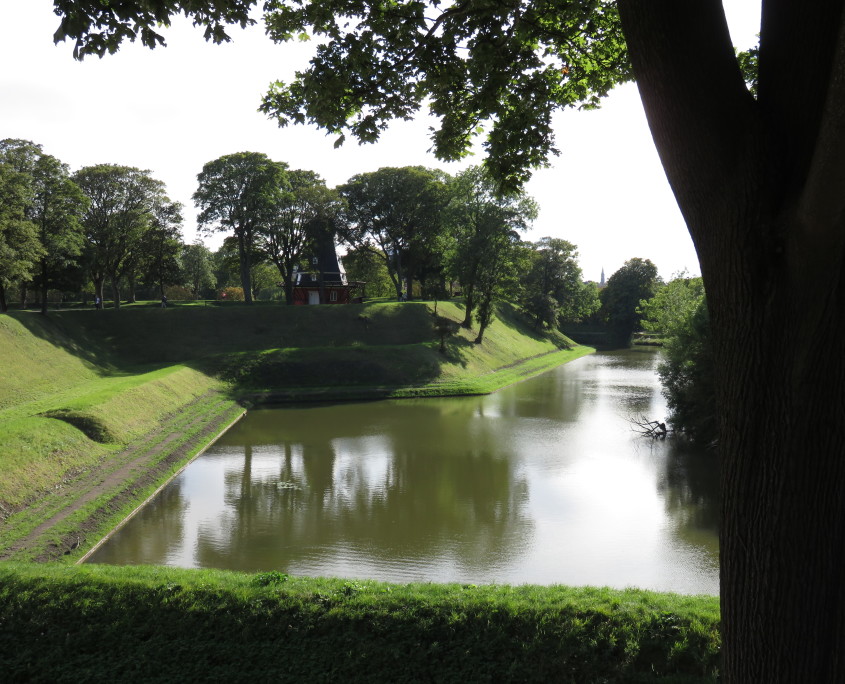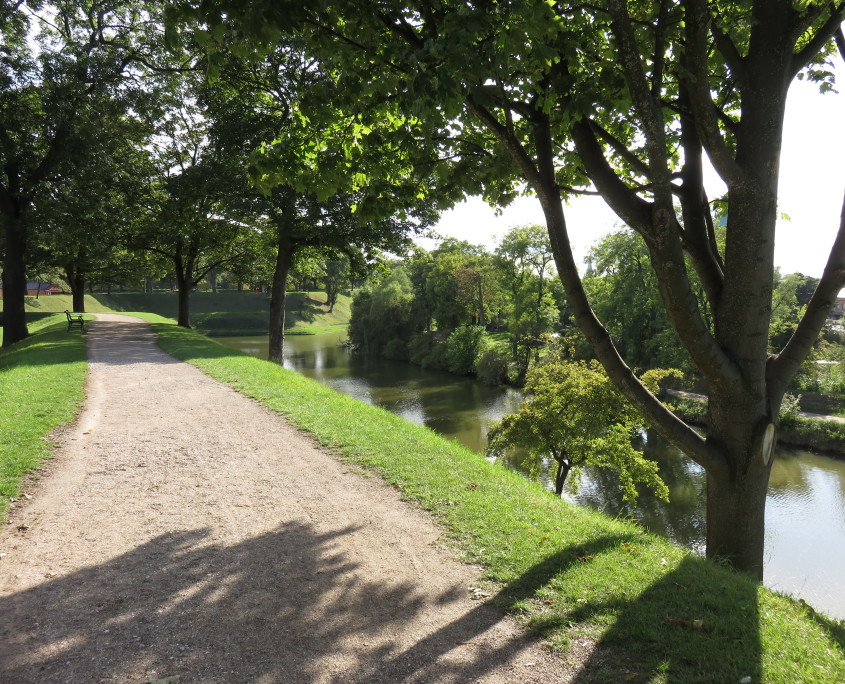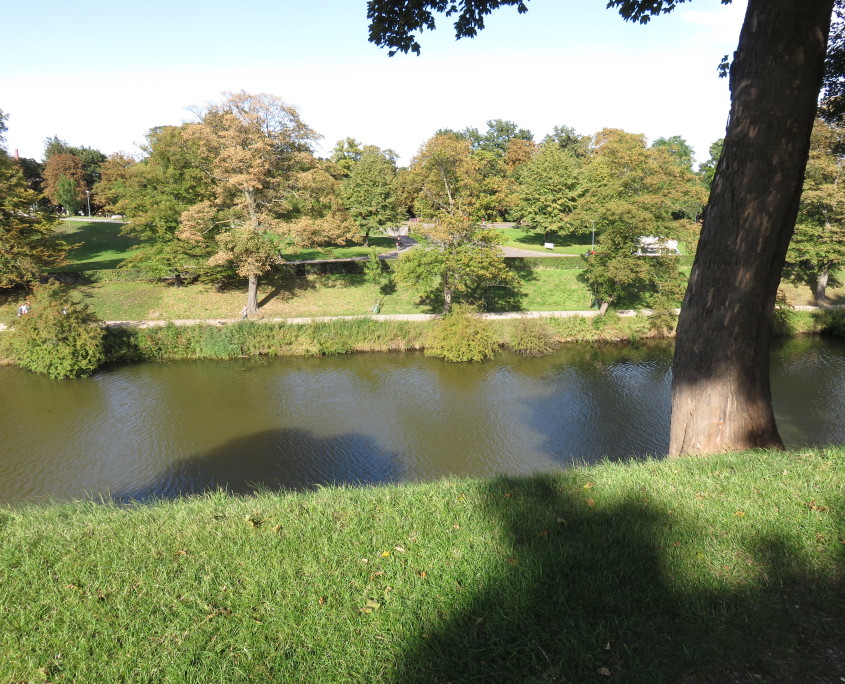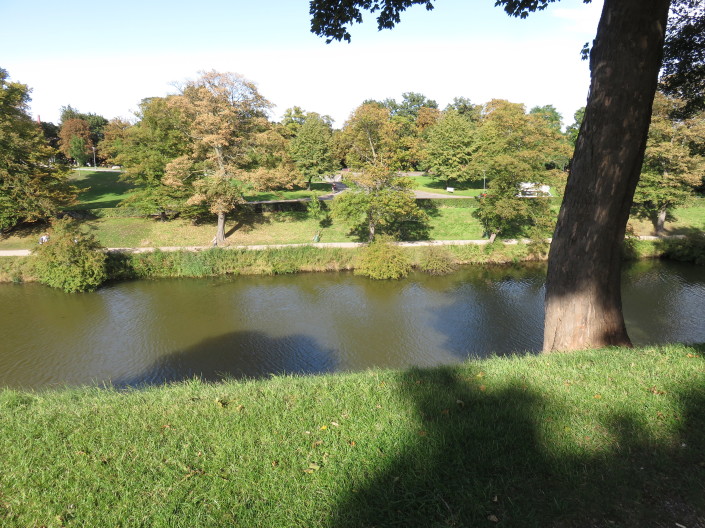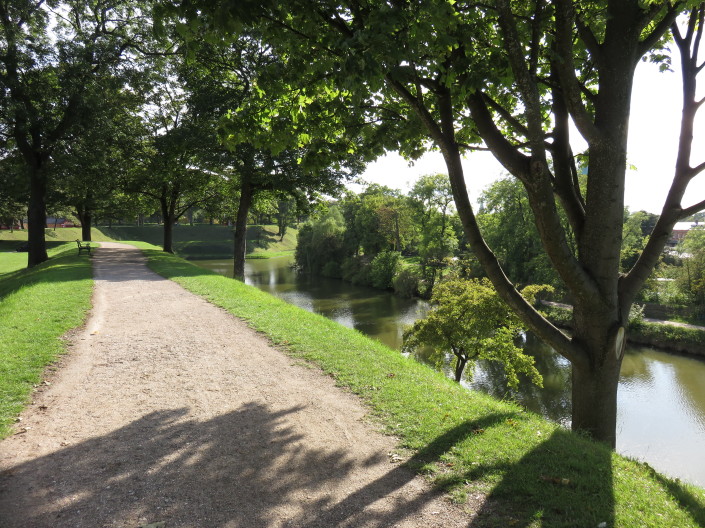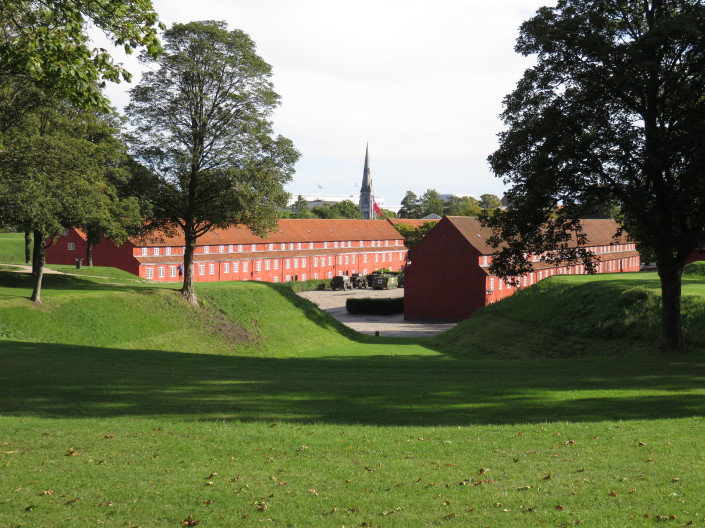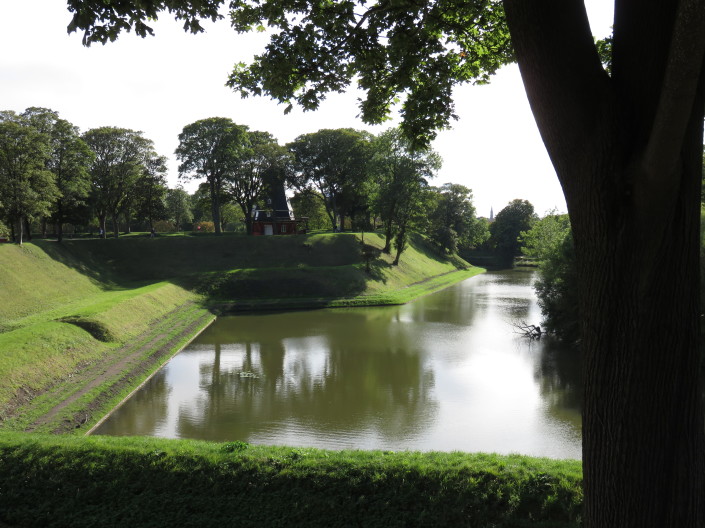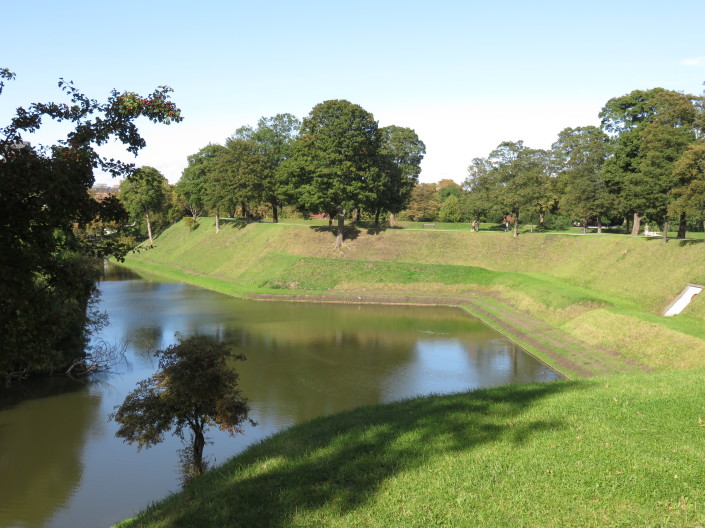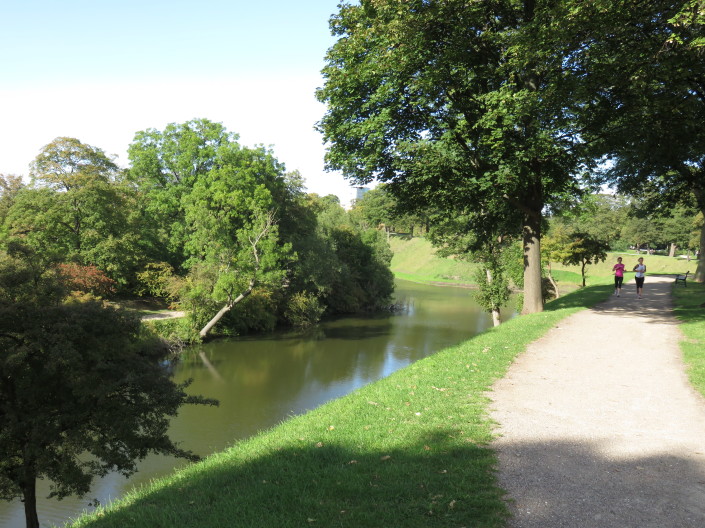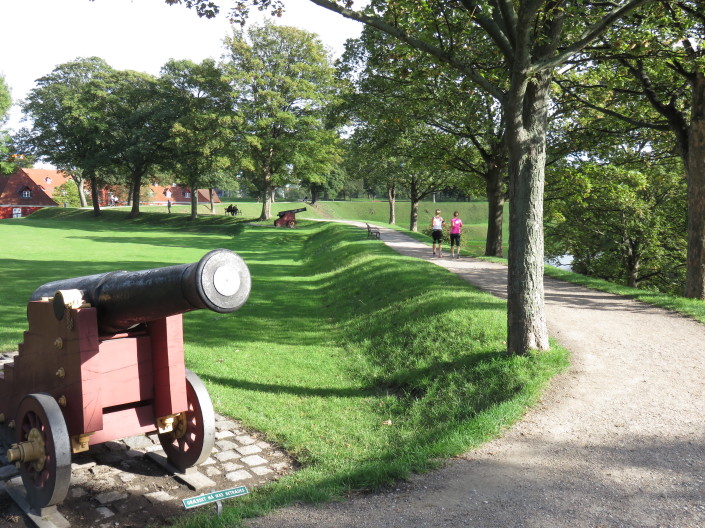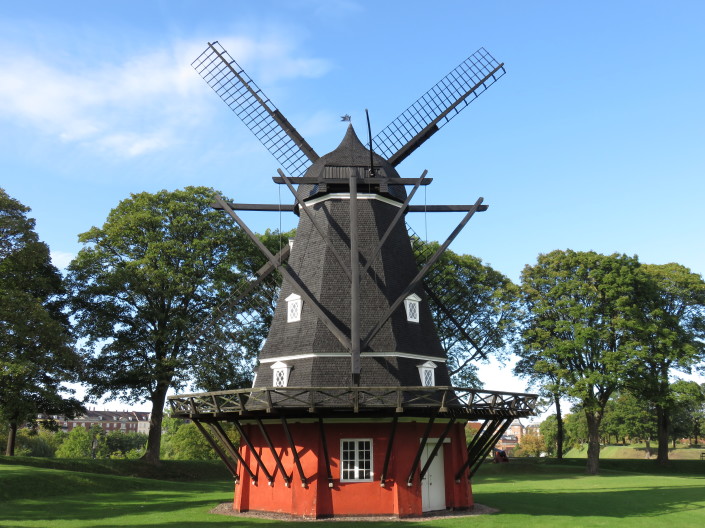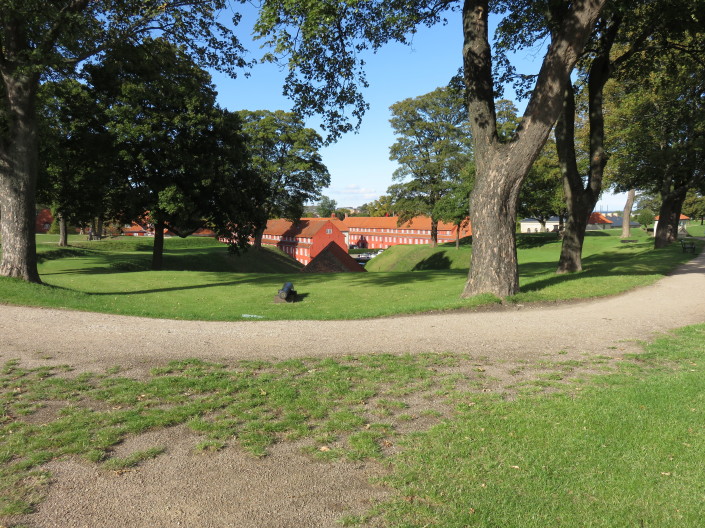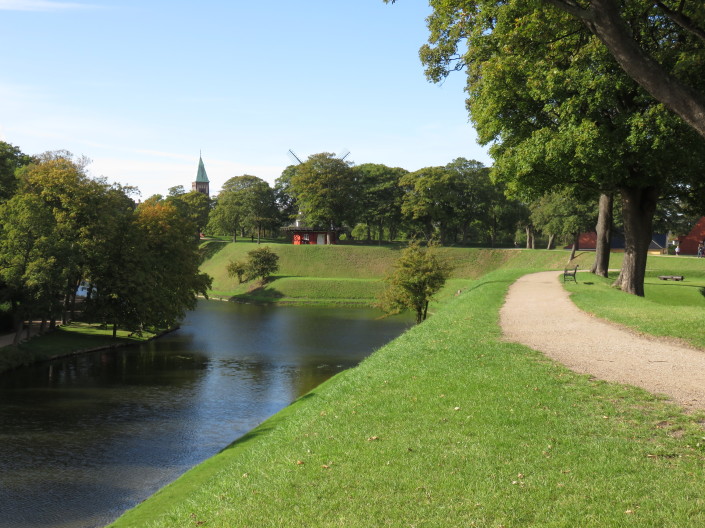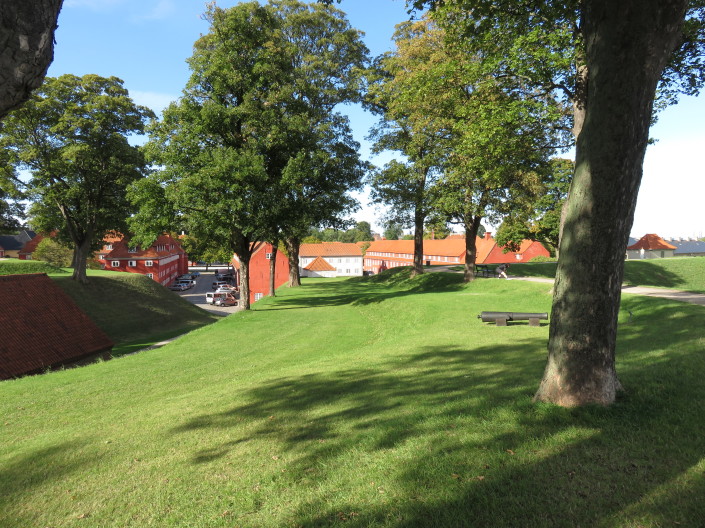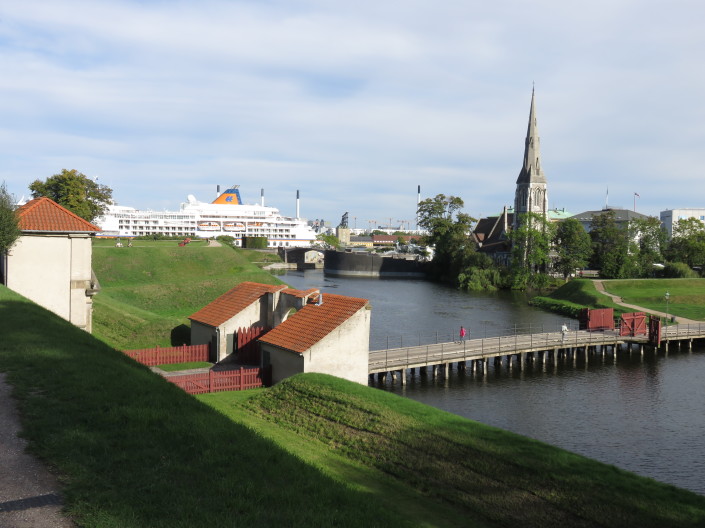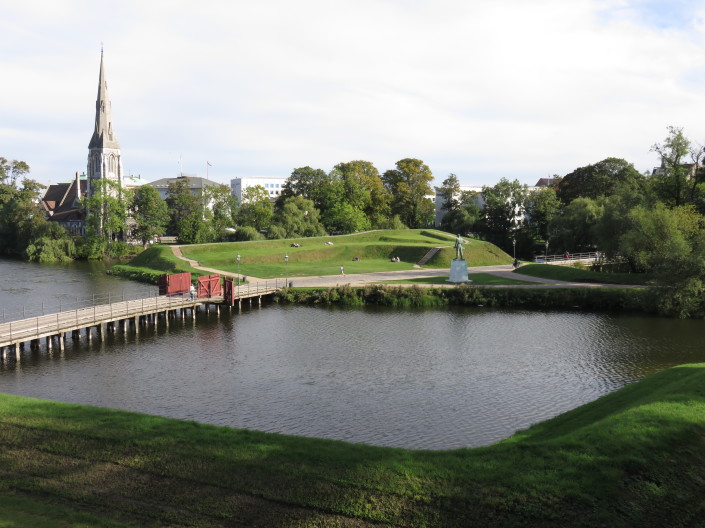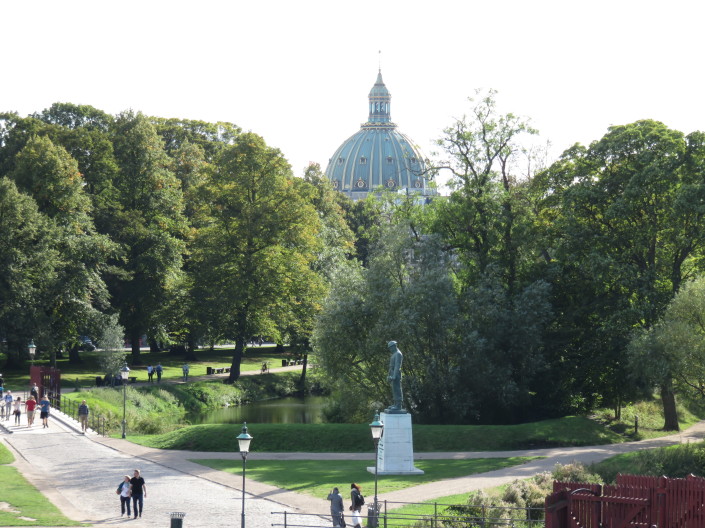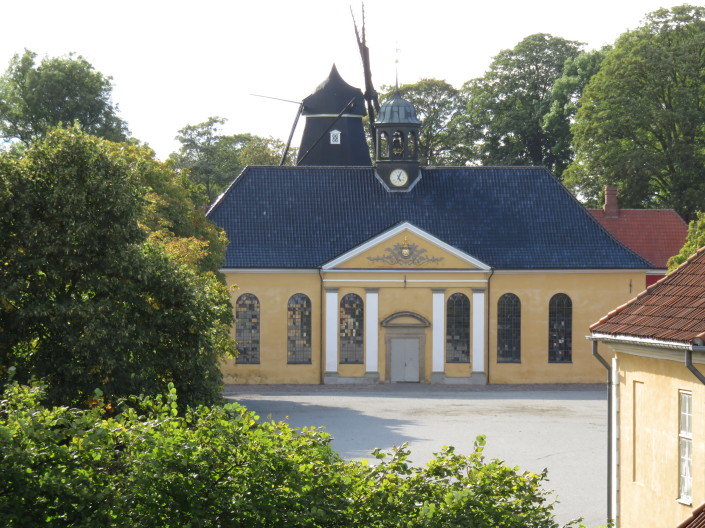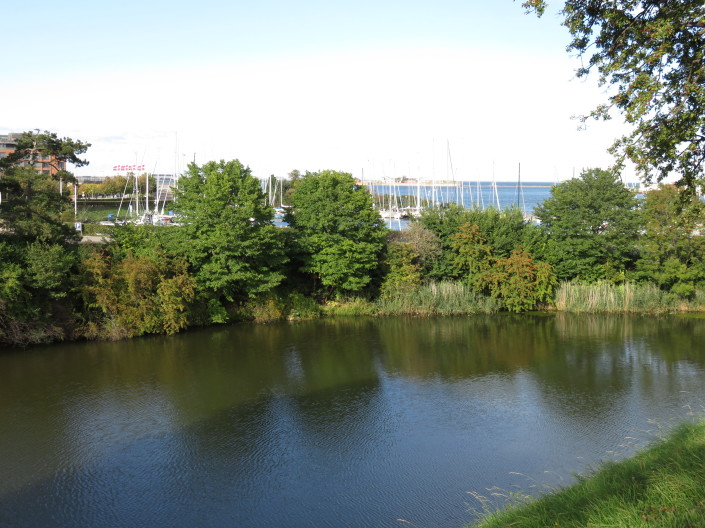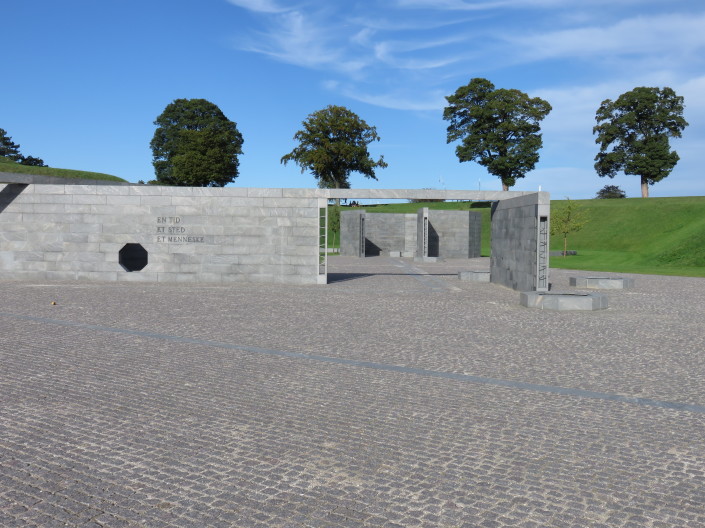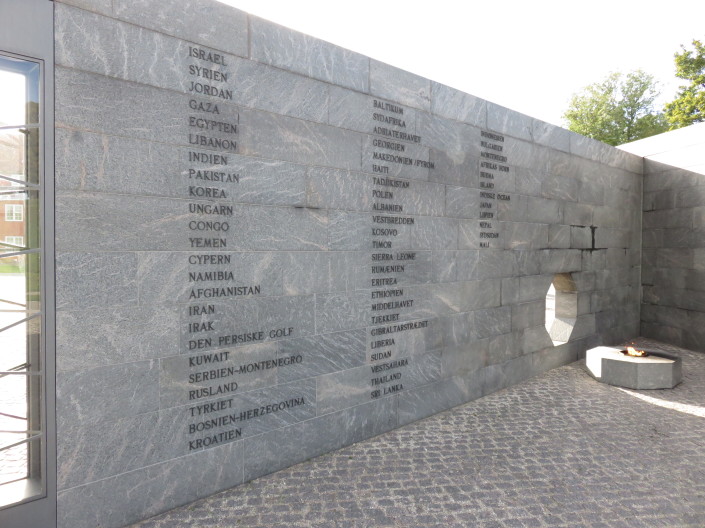Kastellet – The Citadel
–
Kastellet – the citadel – in Copenhagen, Denmark is one of the best-preserved star fortresses in Northern Europe. It is constructed in the form of a pentagram with bastions at its corners. Kastellet was continuous with the ring of bastioned ramparts which encircled Copenhagen.
A number of buildings are located within the grounds of Kastellet, including a church as well as a windmill. The area houses various military activities but it mainly serves as a public park and a historic site.
King Christian IV of Denmark initiated Kastellet’s construction in 1626 with the building of an advanced post to guard the entrance to the port. King Frederick III succeeded King Christian IV and continued the construction of Kastellet. After the Swedish siege on Copenhagen (1658–1660) the Dutch engineer Henrik Rüse was called in to help rebuild and extend the construction.
Kastellet was part of the defense of Copenhagen against England in the Battle of Copenhagen.
Christen Købke (1810–1848), a Danish painter associated with the Golden Age of Danish Painting, grew up in Kastellet and made many paintings of the area.
Kastellet was renovated 1989–1999 with funds from the A.P. Møller and Wife Chastine McKinney Møllers General Fund managed by Maersk.
The Citadel has two gates, King’s Gate on the south side, facing the city, and Norway Gate on the north side of the edifice, which both date from 1663 as part of Ruise’s original citadel. They are built in the Dutch Baroque style and are on their interior side flanked by guardhouses. The Norway Gate used to face open countryside outside the city and has therefore been built in a more simple design.
The Commander’s House (Danish: Kommandantboligen) served as the residence of the commander of Kastellet. It was built in 1725 in the Baroque style by architect and master builder Elias Häuser.
The Rows (Danish: Stokkene) are six two-story terraces that were originally built by Henrik Rüse as barracks for the soldiers based at the Citadel. The dorms measured four by four meters and contained two triple beds, a small table, and two benches.
The two storehouses also date from the foundation of the Citadel. They were to store everything needed in the event of a siege and could when full feed the 1,800 men of the garrison, other personnel, and their families for four years. The Southern Storehouse (Danish: Søndre Magasin) served as an arsenal while the Northern Storehouse (Danish: Nordre Magasin) contained a granary.
The Powder House at the Queen’s Bastion, which was used for the storage of black powder, is the only surviving of originally two identical powder houses which were built by Domenico Pelli in 1712. When in 1779 a powder house at the East Rampart exploded, it was decided that it was too dangerous to store explosives at the Ramparts, and the powder houses at the Citadel instead came into use as a jailhouse.
The Church at the Citadel was built in 1704 in heavy Baroque style during the reign of King Frederik IV.
A prison complex was built on the rear side of the church in 1725. Eye holes in the wall between the church and the prison cells made it possible for the prisoners to follow the church services.
On the King’s Bastion, in the southwestern corner of Kastellet, stands a windmill. Built in 1847, it replaced another mill from 1718 which was destroyed by a storm the year before. The original mill was a post mill while the current mill is of the Dutch type.
Since a fortified city needed secure supplies, including supplies of flour and rolled groats, in the event of a siege, numerous windmills were constructed on the bastions. In 1800, a total of 16 windmills were found on the ramparts of Copenhagen. The mill at Kastellet is the last which is still working.
Russian Empress Consort Maria Feodorovna, daughter of King Christian IX of Denmark, got her rye flour from the mill at Kastellet. The Army’s Bread Factory would send it to the Imperial Court in Saint Petersburg where she was served “øllebrød” (dish made of rye bread, sugar, and non-alcoholic beer) every morning in the Anichkov Palace.
Located just inside the King’s Gate, the Central Guard House was built from 1873 to 1874 with an attached jailhouse.
The Citadel is still an active military area that belongs to the Danish Defence Ministry. Military activity in the area includes use by the Chief of Staff, the Danish Home Guard, Military Intelligence, the Judge Advocate Corps, and the Royal Garrison Library.
In spite of the continuous military presence in the area, the Citadel is today a peaceful, protected area, serving as a public park as well as a cultural-historical monument.
It is located close to Langelinie with The Little Mermaid and the Gefion Fountain.
It is a popular place to go for a walk on a sunny day and is very popular with children because of the many animals and birds on the grounds.
The site includes two small museums with limited opening hours.
There is a changing of the guard ceremony at the Central Guard House every day at 12.00. Military concerts take place at the drill grounds on summer afternoons at 14.00. The Citadel Church frequently arranges concerts as well.
The Citadel’s birthday on 28 October is marked with an annual concert and the wings of the windmill will turn.
It is a tradition to promenade on the ramparts on Store Bededag, a Danish holiday, which is also celebrated with music.

